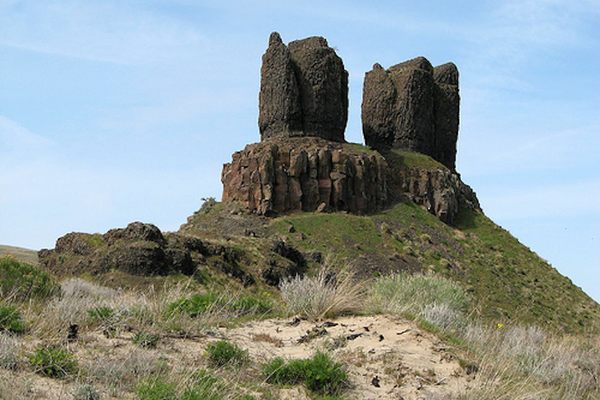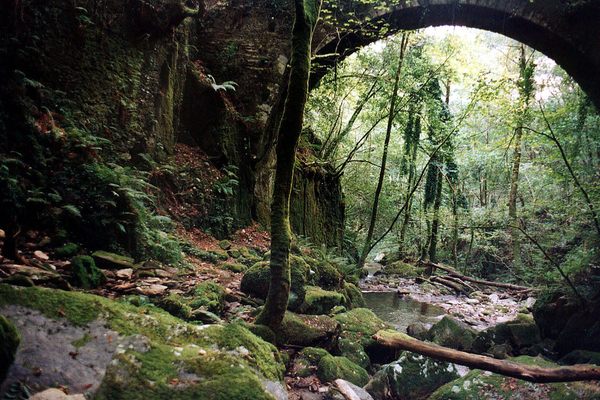AO Edited
Juniper Dunes Wilderness Area
One of the northernmost occurrences of western juniper can be found in the sand dunes of Washington's Palouse.
Juniper is one of the trees most characteristic of the western United States. Typically they are a major component of the driest and hottest forest climatic zone, which occurs at the lowest elevations. (To be sure, “forest” can be a bit of an exaggeration, because the trees commonly occur as scattered groves and isolated individuals rather than as continuous cover.)
Western juniper in particular is widely distributed in the semi-arid scrub zones in the lower elevations. The species becomes less common to the north, and the occurrence here is either the farthest north or nearly so (sources differ). Unusually, the trees are growing on partially stabilized sand dunes, part of the Palouse (pronounced “puh-LOOSE”) of eastern Washington. Grasses and other low vegetation, as well as sagebrush, occur among the juniper. The junipers are more abundant toward the northeastern part of the wilderness area, which is the farthest from the main access point.
The Juniper Dunes were designated a wilderness area in 1984, and are right next to a designated area where off-highway vehicle (OHV) activity is allowed. This makes the wilderness area more subject to vehicle noise than might be wished.
Know Before You Go
Accessing the Juniper Dunes is difficult. The area is nearly completely surrounded by private land, with the only permanent public access being through the OHV area to the west. The parking for the OHV area is reached by the (paved) Juniper Dunes Road, which intersects the Pasco-Kahlotus Road at about 48.28443 N, 118.93185 W. Take this road north about 4.3 miles to an unpaved parking area (around 46.34615 N, 118.9302 W). Even in the parking area it is easy to get stuck in the sand, and vehicle travel beyond this point most definitely requires 4wd; in general, the farther you go the more extreme the road conditions.
The ill-defined, and only partly graded, Juniper Road comes into the parking area from the northeast. A welter of use roads, due to the OHV activity, makes the road difficult to pick out, but it is generally wider and has vestiges of a graveled surface. A landmark about 1.5 miles in is a big lone juniper, at about 46.35913 N, 118.90752 W. You can park around here as the road gets even worse, with deeper sand, farther in.
After another 0.7 miles you reach the Wilderness Road junction (at about 46.36775 N, 118.90302 W). Turn right here; it is about 0.9 miles to the gate into the wilderness area. This road is composed of deep sand and will require extreme 4wd capability.
A private landowner allows day-use access into the wilderness area from Joy Road on the north side of the wilderness area (at about 46.42857 N, 118.82535 W), but only from March through May. Check this website for details.
There are no amenities, either in the wilderness or at the OHV trailhead. Plan accordingly!





























Follow us on Twitter to get the latest on the world's hidden wonders.
Like us on Facebook to get the latest on the world's hidden wonders.
Follow us on Twitter Like us on Facebook